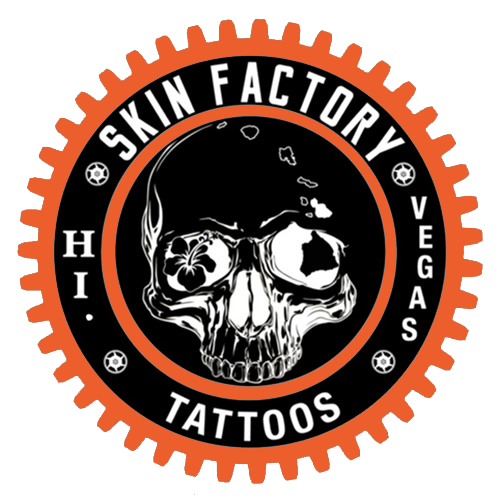Exploring the Bold Elegance and History of Blackwork Tattoos
Blackwork tattoos have been around for centuries and have a simple, bold elegance. Learn about the origins of the style and get inspired for your next tattoo.
Exploring the Elegance and History of Blackwork Tattoos
Roughly 15% of people in the United States have a tattoo. Tattoos have been around for thousands of years. One of the first civilizations to practice tattooing was the Polynesians. Though most cultures have their own traditions and styles of tattooing, only some have seen a revival in the modern day.
Polynesian tattooing is one such tradition that has found new life in an art style known as Blackwork tattoos. But what is Blackwork, and where does it come from? The answer to those questions awaits you below.
What are Blackwork tattoos?
 This isn’t an easy question to answer. The simplest definition is that it’s a style of tattooing that uses large amounts of black ink–hence the name–to create the image of the tattoo.
This isn’t an easy question to answer. The simplest definition is that it’s a style of tattooing that uses large amounts of black ink–hence the name–to create the image of the tattoo.
Oftentimes, Blackwork tattooing incorporates themes and symbols from tribal and geometric designs. It’s also known to have thick lines and uses no color.
Technical definitions aside, describing Blackwork tattoos as ‘a style that uses a lot of black’ is like describing impressionist paintings as ‘made entirely with dots.’ Sure, it’s true, but it only tells us how it’s made, not why it’s done, what it’s about and what inspired it.
Blackwork tattoo artists
This is especially true with Blackwork tattoos because the style as a whole has great range. While some may use it specifically for tribal designs, and others for geometric designs, some artists do both themes and more.
Some artists infuse them with futuristic designs to create an amazing image and a fitting metaphor for the timeless conflict of past versus future, tradition versus change, and where we come from versus where we hope to end up.
History and tradition are important topics when it comes to art. Our perception is heavily based on who we are and what we’ve experienced.
For instance, think of the famous piece American Gothic. Looking at it may bring a lot of different thoughts.
History and tradition
Some viewers might experience national pride. Others may gain a renewed strength against the struggles in their own lives, while others might yearn for a simpler life.
However, knowing that someone created the piece during the Great Depression may change your perspective. Perhaps you don’t see the painting as an image of pride anymore, or strength or simplicity. Perhaps those original feelings are even stronger now.
If things have changed, maybe it’s now an image of fear or hope. The painting seems to say ‘this is all we have and all we know, and we can only hope it’ll be here tomorrow.’
With the relationship between art and perspective in mind, let’s look at the history of Blackwork tattoos.
History of Blackwork
Blackwork traces its origins to the Ancient Polynesians, who used tattoos to identify themselves. Polynesians had tattoos for everything from age, to gender, to the status of the family.
The Polynesians weren’t the first culture to use tattoos for identification. Maori’s are famous for their tattoos. The more tattoos one had, the better warrior they were. Much like the Maori, the Ancient Celts wore their tattoos proudly, and today Celtic symbols are among the most common in tattooing, including Blackwork.
In the latter half of the 18th century, Polynesian tattooing found its way west with the help of the famous Captain Cook.
While in Tahiti
Cook took a liking to the Polynesians’ style of tattooing. When he returned to England, word of the tattoos went with him, and soon tribal tattoos became common among blue-collar Europeans.
It took a while for the practice to become acceptable at other levels of society, but they did catch on. This development is somewhat recent. Ask your parents or grandparents. Chances are, they still remember when soldiers and bikers were the only ones with tattoos.
Originally, tattoo artists inserted ink under the skin with a sharpened instrument. They used a blunt object to tap the back of the sharp instrument, thus depositing the ink under the skin.
Traditional methods
This is the process modern tattooing is based on. Even so, some tattoo artists still insist on the traditional method.
Among this latter group are many of the peoples whose traditions inspired modern tattoos, practicing their traditions in the same way they have always done. We should preserve traditions, even with the passing of time.
With the advancement of technology and the changing of attitudes over time, tattoos are more prevalent, and today a large percentage of people have them.
As the popularity of tattoos increased, so did the creativity put into them. What was once a style exclusively based on Polynesian and other tribal designs has now evolved into a genre all its own
Tattoo it Black
The word ‘tattoo’ comes from a Tahitian word, and, in a way, it is the perfect metaphor for the artwork it describes. Many cultures use tattoos for different purposes.
The Romans used them to identify servants and slaves. Egyptian women used them for healing and to symbolize their status as a priestess. Polynesians had tattoos to represent everything about themselves, from who they were to who they loved.
In these past few hundred years, tattoos have spread across the world. Styles are often preserved, altered, and re-purposed. Blackwork tattoos have gone from traditional to a beautiful hybrid of tradition and the present.
Black Ink Tattoos
In its signature black ink, you can find structure and freedom, familiarity and mystery.
Through the years, tattoos, and even the word ‘tattoo” has not changed completely. Through it all, there has been one constant, started in Polynesia and kept around the world: tattoos are about identity.
They tell the world who we are and what’s important to us. They are a reminder amidst all the confusion, something permanent in an ever-changing world.
If you want to learn more about tattoos or where you can get one, please contact us. We have locations in Las Vegas, Henderson, Nevada and Maui, Hawaii.
